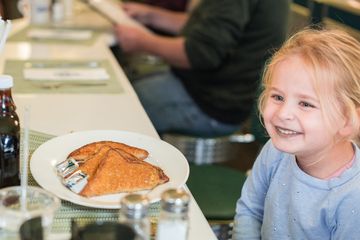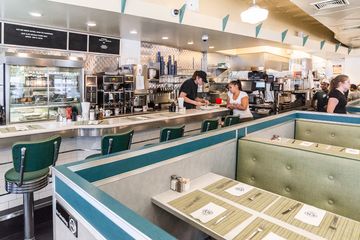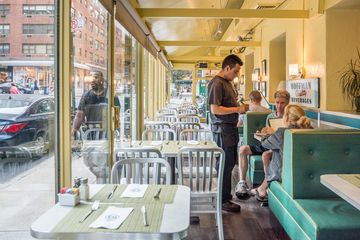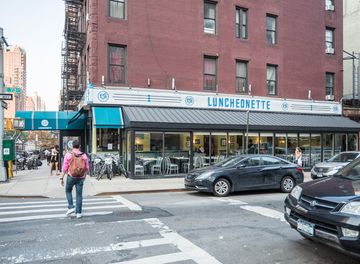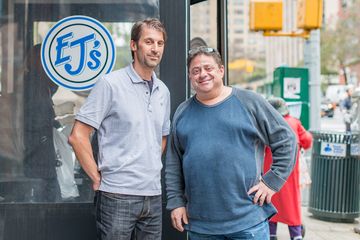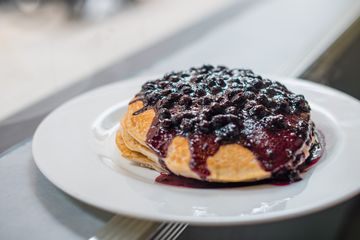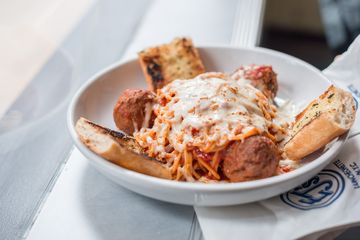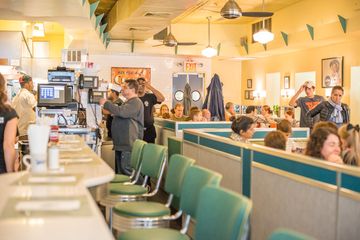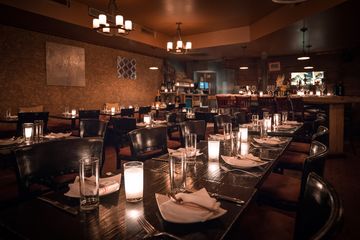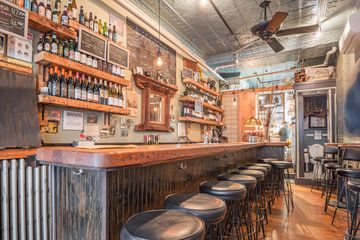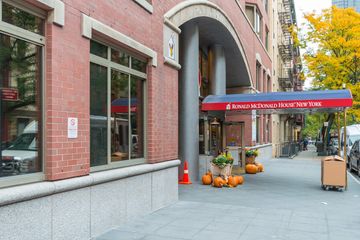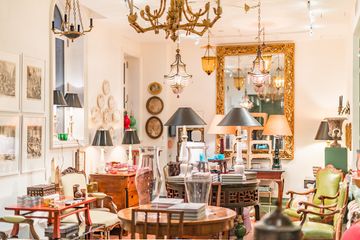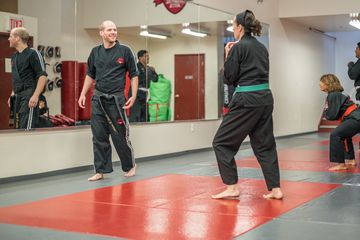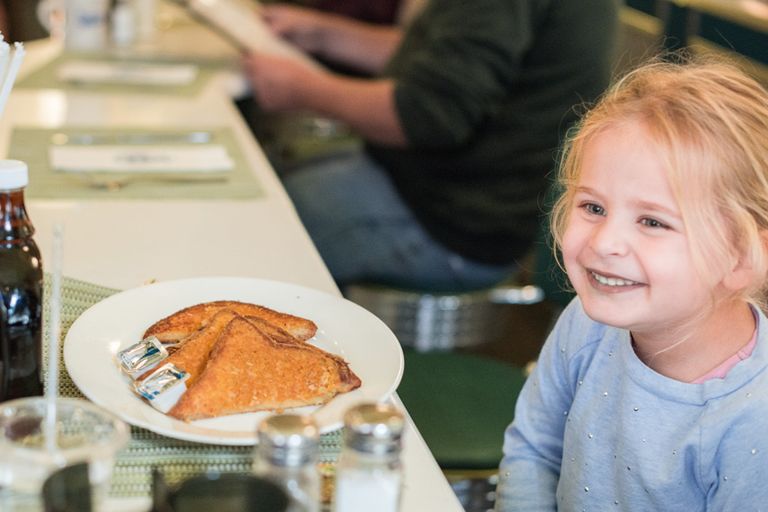
EJ's Luncheonette has mastered the art of American comfort food...and beyond. This was the go-to spot for my kids in the morning, whenever they spent time with us in our East 73rd Street apartment. The eatery churns out perfectly toasted bagels, omelets, homefries, French toast and pancakes. When in the mood, my family members also appreciated their greasy hamburgers (meant in the most loving way), and my husband was a huge fan of the milkshakes....while I always appreciated their healthy, vegetarian choices. Sadly, I now live on the Upper West Side, so we do not get here as often, but visiting EJ's with the Manhattan Sideways crew was a real treat.
On one visit we met Eric J. Levine, also known as EJ. Despite the fact that his initials are “EJ,” the restaurant name is also a combination of his plus that of his partner, Jay Silver. While sitting at the counter, he talked about his background, which is also partly his father’s story. Eric explained that his father wanted to open a restaurant/bar in his later life “like every other Jewish businessman with a mid-life crisis.” Unlike many other men, however, he went through with it. He left his job in the garment district and fell into the restaurant business at fifty-five years old with Dock’s Oyster Bar and Seafood Grill. Growing up, Eric worked in various restaurants, but when he reached adulthood, he tested out a series of different paths. He dropped out of college and became a stockbroker for four years, during which time he “worked 100 hour weeks.” He then went back to college at NYU. When he dropped out, he told me, “The only business I knew was the restaurant business.” He opened EJ’s on the Upper West Side in 1990 and became one of the pioneers in resurrecting Amsterdam Avenue. “We were busy day one,” he said, and the business kept accelerating from there until they sadly closed in 2013 after the lease expired.
Although the luncheonette appears to come straight out of the 1950's, Eric opened his second EJ's on the East Side in 1991. His team was comprised of people he had met while spending time at Dock’s. Jay, for example, was the chef at Dock’s and their other partner, Robert Eby, was the General Manager. Eric admitted, “My father was always involved by extension.” Eric was also inspired by his father, who helped open the restaurant Carmine’s and Angelo & Maxie's Steakhouse. “That’s the whole tree of life,” Eric said with a smile, reflecting on the two intertwined careers.
Eric has branched out to other restaurants throughout the years. He and his partner started a consulting company and owned a few pizzerias that he has since sold. EJ’s on East 73rd, however, is at the core of everything he does. “I guess this is my baby,” Eric admitted. He is proud to be an independent business, despite how difficult it is. “Being the mom and pop guy...it’s a different environment,” he said soberly. This is especially the case for a breakfast, lunch, and dinner restaurant. “You always have to be on your toes,” Eric stated. “People gotta eat!” He is open every single day of the year. He is often busiest on holidays including Thanksgiving and Christmas, since EJ’s is “the only game in town.” Eric confessed, however, that he enjoys being at EJ's on the holidays. “It’s the best day to work – people are in great moods.”
EJ’s also has a healthy delivery and catering business, though Eric much prefers it when people come in to eat. He also admitted that while EJ’s is lauded for its breakfast, he would like more people to know about his dinner specials. “All our food’s home cooking,” he said proudly, adding that EJ’s is the closest thing the Upper East Side has to a casual seafood restaurant – it is one of the few places where a customer can get a fresh piece of fish for $20.
EJ's menu continues to evolve in an effort to suit people’s taste. Eric sited an example of having recently removed the egg cream from the menu, since no one was ordering it anymore. He has now added a power smoothie with flax seed and greek yogurt. The cooking staff presented us with their latest endeavor - gluten-free pancakes, along with their classic spaghetti and meatballs. “There’s a lot of love and attention put into it ...We make food to make people happy.” When I questioned Eric about his continued passion for running the restaurant, he reigned in the emotion like a true New Yorker and quipped, “It’s better than being in a dentist’s office!”
